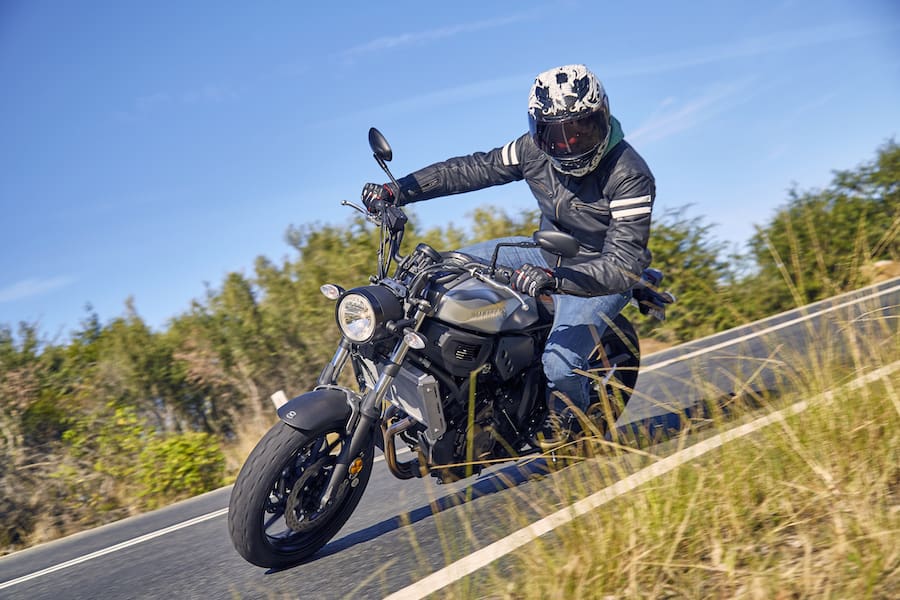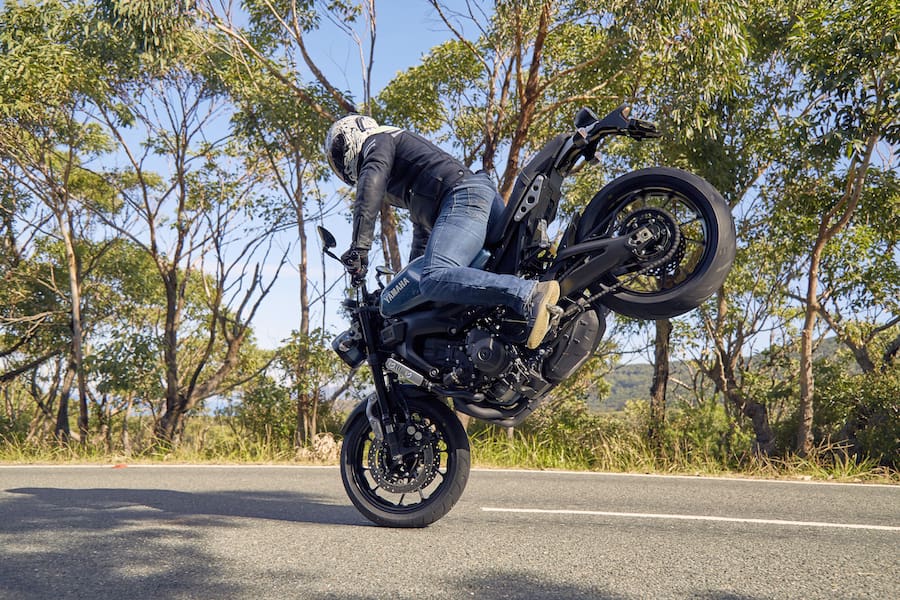For a start, hipsters ride bikes for different reasons to most of you reading this, and a great deal of their attraction to two wheels is building one themselves out of fencing wire, a mate’s old XJ chassis and whatever else comes to hand. They don’t buy new bikes off the showroom floor, even bikes that offer as much as this one does for $12,999 (+ ORC).
Secondly, this bike punches so far above its weight in most areas, that aiming it at riders who are more into what they can do to a bike, rather what they can do riding would be a waste.
Yes, Yamaha’s burgeoning accessories catalogue – including many interchangeable parts from the MT-09 base bike’s parts list – means you can add juicy bits to your ride, but so can anyone else with the cash and motivation. However, nothing you can add to the standard XSR900 is likely to improve the base model too much, because it’s already just so damn good for the money.
The lively engine is more refined than on the early MT-09s and the 847cc triple is a magnificent choice for Yamaha to build so many bikes around – the MT-09, XSR900, Tracer and upcoming adventure bike all benefit from a heart that doesn’t just add performance to the bike, but adds soul as well. It’s torquey, sounds great, sips the juice (I have averaged 5.8lt/100km in the three weeks I have had the bike) and, most importantly, leaves you short of breath when you exercise its inner beast in a road scenario.
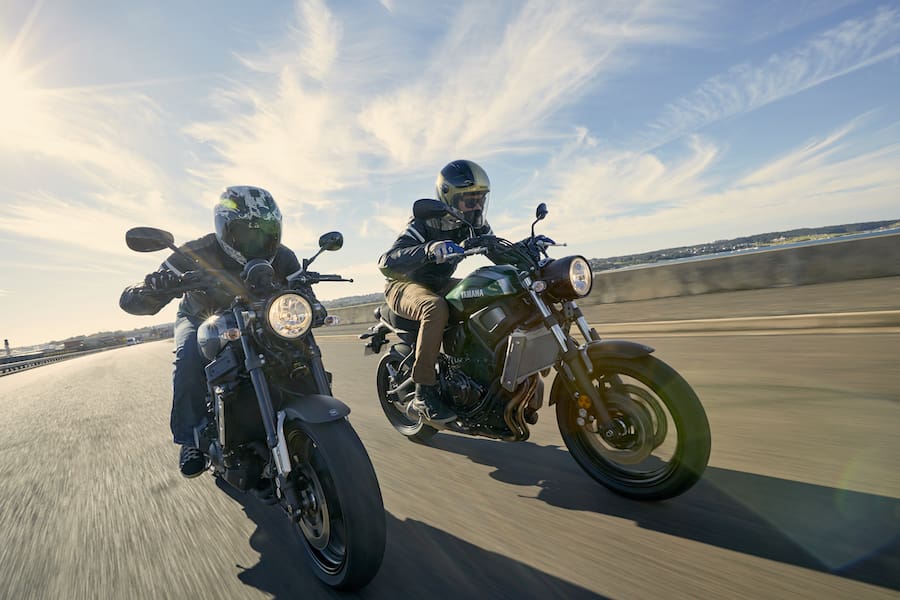
It’s so useable and with the re-tuned engine maps – I use the Standard rider mode most of the time – it has enough variety to suit most riders I know.
The throttle response still isn’t perfect, with too much, too early, especially in A Mode, but better than on the first MT-09. If you’re crap at the tried and true throttle technique of ‘twisting the doorknob’, this bike will show you up. This imperfection is also part of the bike’s appeal, however, as the whole thing just feels so sharp and alive.
Bikes of this price range generally feel relatively doughy and unresponsive, but this bike perks up happily every time you use any control, not just the throttle. Brake feel is sharp with more grunt than you expect under the fingers. The gearbox isn’t the tightest out there, but it is one of the lightest to use. The clutch, the front end, the rear brake – they all want to please you with their eagerness to just get on with riding.
This feel permeates the bike. It’s a character pioneered by the MT-09, but with more refinement – Yamaha is getting to know its beast better. It is more of a point-to-point weapon than a sub-$13K bike should be, and certainly more than you expect of a mid-size triple (850cc is mid-size now, is it not?).
Take it to a racetrack and yeah, sportsbikes will put it in its place. But on the road, among traffic or the trees, its real-world goodliness is omnipotent. Any shortcomings can be explained away by the price.
The suspension is harsh on small bumps, like all cheap-ish suspension, and the fork is sprung too light, while the rear shock is damped too soft in my opinion. You can’t adjust much of that away with only adjustable rebound and spring pre-load front and rear, but how this bike would go with some quality fork internals is a mouth-watering thought.
That’s because as it is, straight out of the crate, it already handles better than bikes worth 50 per cent more. You can handle mild harshness when a bike tracks around a corner as effortlessly as the XSR900 does, and its suspension is markedly better than that of the MT-09.
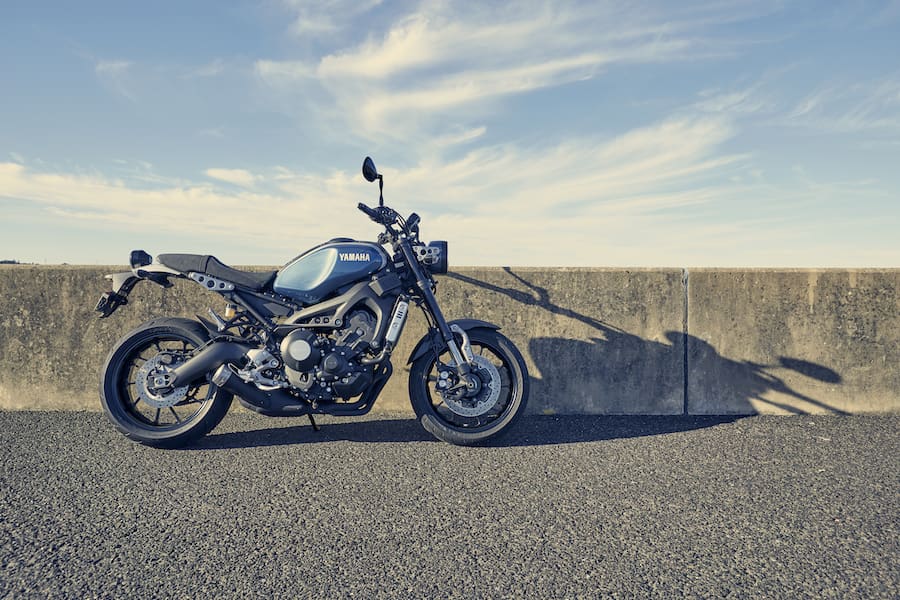
It all comes down to chassis balance and weight, and the bike is superb in that area. Being ‘only’ an 850, the whole package comes in at a claimed 195kg (ready to ride), so there’s not a heap of muscling to do when roads meander left and right and you follow them, bouncing that exhaust note off the walls and yahooing like a nutbag – but not in an open-faced helmet, because you ain’t a hipster…
Like all modern bikes, there is a suite of rider aides and modes on the XSR900 and they aren’t terrible.
The Traction Control System (TCS) is a pain in the butt when in its most obtrusive setting, because a bike like the XSR900 skims its front wheel on even a mediocre take-off, bringing on nut-crushing amounts of DTC. It’s annoying. Even the less intrusive number two setting got in my way too much, so I turn the DTC off most of the time. Problem is, I have to turn it off every time I start the bike – it defaults to on.
In my opinion, traction control is for slippery situations, new riders and riders no good at throttle control. I love to have it in those situations, but those are rare in my riding world. Please let us default the DTC in the off setting Yamaha, we won’t suddenly all explode in a ball of flame without it…
The ABS, which you can’t turn off, is superb, however. It allows the rider to smash out the mega-hard stops the superb twin disc set-up is capable of, because those brakes allow such excellent feel, you can take the front Bridgestone to the edge of traction via feel alone, with the Bosch ABS chiming in only if and when things go from squirm to screech.
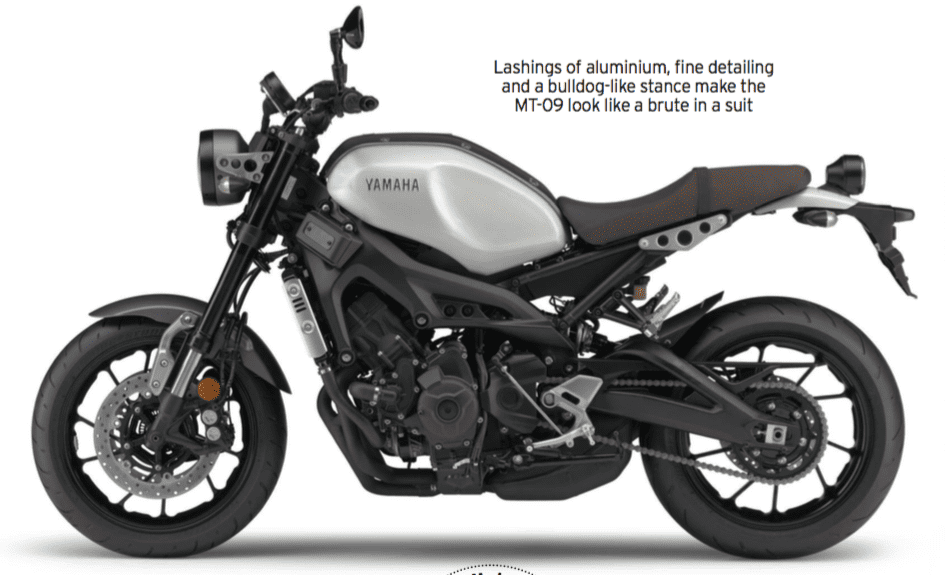
This is where rider aids belong – actually aiding your riding by providing a safety net, but with room to improve your skills. The front brake combination is simply excellent, and I feel comfortable braking as hard as the conditions allow, and knowing I have more than reflexes to protect me from a front-end tuck.
You know a bike’s brake set-up is great when you brake late and hard up to traffic lights, just for fun. This is that kind of bike. The slipper clutch is set up conservatively, but helps you keep things smooth into corners and play at being a MotoGP rider the rest of the time.
Our launch route was the Royal National Park route manufacturers seem to favour these days, but I held onto the bike for another few weeks, and have covered all kinds of conditions and ride areas on the bike.
I was out in that rubbish weather that took out some of Sydney’s most expensive houses, took a run to Kiama and back via the B roads and freeways, commuted and scratched. In all those kilometres, I have found very little to dislike about this bike.
Like many riders in their forties, I love the roomy, narrow ride position and the high bars that still offer great feel from that front Bridgestone. The only thing I can fault here is the lack of clutch lever span adjustment. That and the fact the trendy but effective dash is too bright at night, with a searing white light I find distracting – it needs a night time dimmer.
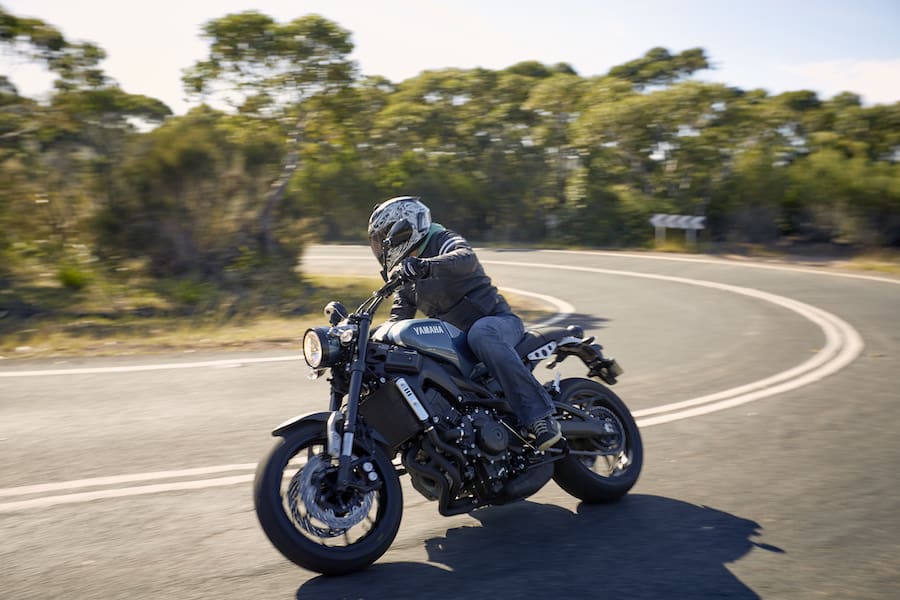
Otherwise, the dash is easy to read in the bright light, and with all the info I need from a bike. That said, the TCS switch – which can’t be operated while moving – is handlebar-mounted, while toggling through the temp, mileage, clock and ambient temp readouts is done using a button on the dash. I’d prefer the positions were swapped.
My inner hipster likes how the XSR900 looks, but mainly because it makes it a wolf in sheep’s clothing – other riders don’t take you seriously until they can’t keep up, and I like that in a bike.
At this price point, it’s generally easy to point at various bits and announce loudly “you can see where they saved the money”. This is best done to a mate’s bike somewhere in public. Hard to do with the XSR.
There’s some messy wires exiting the dash – done, I suspect, to sell more accessory windshields – and I have endured more negative comments on the taillight than good ones, though I personally don’t mind it.
Otherwise it’s easy to start rounding off the XSR900 picture in a very positive light.
Its dynamic, real-world performance exceeds what the price tag promises. The bike lacks nothing in real-world terms, and executes what it has to a point where it’s pointless trying to pick marks against it. Besides, with most negatives you do find, the reasonable answer lies with the price tag – and that’s fair enough.
I really enjoy riding this bike, in hoon mode, commuting mode, scratching mode, just riding for the hell of it mode. I haven’t been this excited by a bike in this price range for a long time, the excellent 2011 Triumph Street Triple R the last that comes to mind. Both are triples, coincidentally…
The XSR900 is a re-masked, refined MT-09, but is another level above the quality of the MT-09 in every area, as similar as they are on paper. This is one of those bikes, like the Street Triple, BMW R1200GS and KTM SuperDuke 1290R that I could just ride forever more and be happy.
The XSR covers all bases, but leaves few areas exposed and while it’s shrouded in hipster marketing speak and arty photos, the fact is it is a lot more versatile than that angle gives it credit for. Whether you run a flannel and beard or not, the XSR900 is a bike worth riding and experiencing, no matter what price bracket you are thinking of shopping in. It’s the bargain of the year – spend the money you save on beard management products and a new leather knapsack. I have as much fun on this bike as almost anything else, and that’s saying something. Ride one.

HERE’S SOME WE DID EARLIER
Okay, so there are some hipsters prepared to spend some time and effort on these bikes, and this pair of machines are well and truly a great base for hipster-based tinkering. Pictured here in the Deus workshop, with some bloke needlessly grinding something, I have to admit the photo stirs something in me, despite my first instinct to yell “muppet!”

THE MT RANGE
The MT-03 I tested last issue is a case study of rideability mixed with practicality and fun at a great price – and this rings true with the entire range.
Yamaha is building a memorable line of machines here, made all the more memorable because their low price tag makes them accessible to more people, meaning there are more bought and more around for us to nostalgically talk about when we spot one in a mate’s garage in 20 years’ time.
Yamaha’s change of focus has yielded a flush of bikes designed with a new way of looking at riding a bike, and the XSR900 is a bike so well thought out, it will make other manufacturers take a good, hard look at how they produce their lower-priced models – and their higher-priced bikes, too.
I’m also hoping this kind of relentless production of fun, affordable bikes will awaken other giants such as Honda and the proliferation of new riders these bikes will help create could usher in a new dawn for us motorcycle riding types.
Big call, I know, but the runs are on the board with the entire MT range from Yamaha and the bikes are getting even better. Can we have a performance version of the XSR900 please Yamaha? More cubes, high-end suspension, wider wheels and a small screen to hide behind – then lookout…
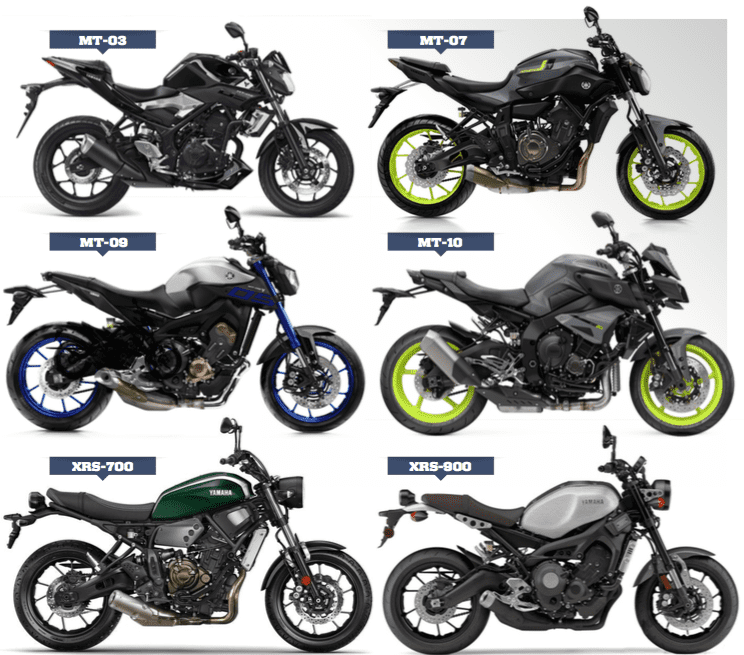

MODUS OPERANDI
So how do the “rider modes” work? By playing with the ignition timing. By advancing the exact moment the spark plugs ignite the fuel/air charge, the bike has an added edge to it. By retarding it, you get the opposite effect. They aren’t so much “modes” as simply different ignition timing settings
Choosing the A mode in the XSR’s case, delivers you an ignition map that makes it snappier than a croc farm. Too much for me, I prefer less excitement, more refinement – that’s what the standard map offers.
The B mode is for days you are struck down by lurgy, or stuck up a clay-packed 4WD trail – I don’t use it much…
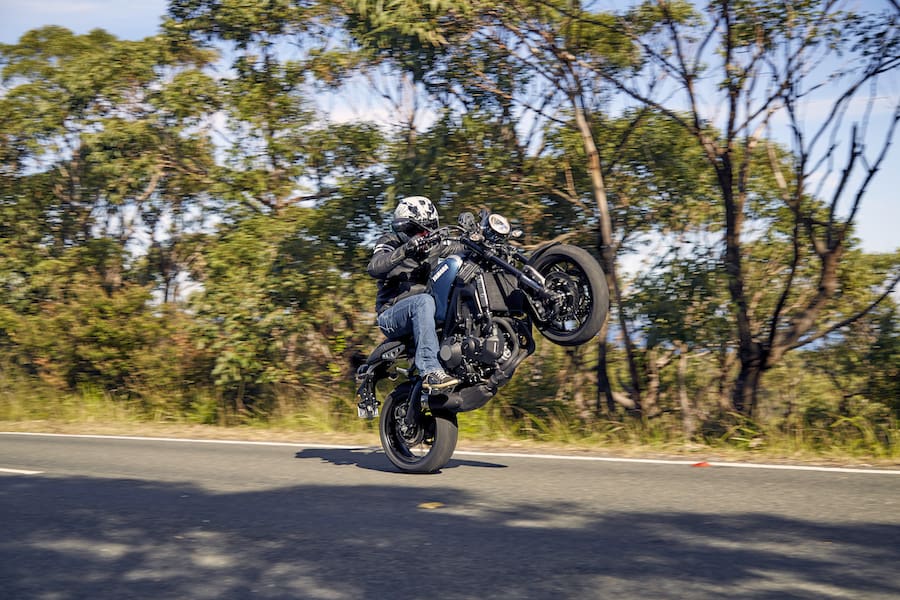
TEST SAM MACLACHLAN PHOTOS JOSH EVANS
